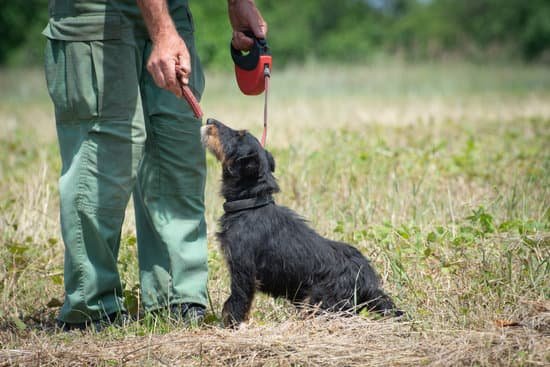How much is dog boarding and training? As a pet owner, investing in professional boarding and training for your furry friend is crucial. Not only does it ensure their safety and well-being while you’re away, but it also helps in shaping their behavior and obedience. In this article, we will discuss the costs associated with dog boarding and training, along with the various factors that can impact these expenses.
When it comes to dog boarding, the cost can vary depending on several factors such as location, services included, and the reputation of the facility. Similarly, dog training programs also come with different price tags, influenced by factors like the type of program and the expertise of the trainer. Understanding these costs is essential for pet owners who want to provide their dogs with quality care and training.
In addition to discussing the average costs of dog boarding and training in different locations, we will also explore combination packages that offer both services at a discounted rate. For those considering professional services for their pets, we will also cover additional costs to consider during the process and tips for budgeting effectively. Ultimately, finding the right boarding and training facility is key – we will provide guidance on what to look for when making this important decision.
The Cost of Dog Boarding
When considering dog boarding, it’s important to understand the factors that affect the cost. The location, facilities, and services offered by the boarding facility all play a role in determining the price.
In urban areas, where the cost of living is higher, you can expect to pay more for dog boarding compared to rural areas. Additionally, upscale boarding facilities with amenities such as private suites, grooming services, and webcams for pet owners to check in on their dogs tend to be more expensive.
On average, dog boarding costs between $25 to $85 per day. The type of accommodation chosen will also impact the overall cost. For example, standard kennels may be more affordable than luxury suites. Some dog boarding facilities offer add-on services at an extra cost such as one-on-one playtime, training sessions or spa treatments for your pet.
It’s vital for pet owners to consider the types of services included in dog boarding fees when calculating total expenses. Some facilities include group playtime whereas others may charge extra for this service. Before committing to a boarding facility, asking about additional costs and being clear about what’s included in the base price can help avoid surprises on the bill later on.
| Location | Average Cost Per Day |
|---|---|
| Rural Area | $25 – $45 |
| Urban Area | $50 – $85 |
| Luxury Suites | $75 – $150 |
The Cost of Dog Training
When considering the cost of dog training, it’s essential to understand the different types of training programs available and the factors that affect the overall cost. The price of dog training can vary significantly depending on various elements, including the type of program, the location, and the duration of the training.
Additionally, the specific needs and behavior of your dog will also impact the cost. Understanding these factors will help you make an informed decision when choosing a training program for your furry friend.
Types of Dog Training Programs
Basic Obedience Training
Basic obedience training is suitable for dogs that require fundamental commands such as sit, stay, come, and walking on a leash. These programs are generally more affordable than specialized or advanced training options.
Behavior Modification Training
Behavior modification programs are designed to address specific behavioral issues such as aggression, separation anxiety, or excessive barking. Due to their specialized nature, these training programs may be more costly than basic obedience training.
Specialized Training
Specialized training may include service dog training, therapy dog training, or other specialized skills. These programs often come with a higher price tag due to their comprehensive nature and specific skill set required.
Several factors can influence the cost of dog training services. These may include the experience and reputation of the trainer or facility, the duration and intensity of the program, and any additional resources provided. Location also plays a significant role in determining the cost of dog training services. Urban areas with higher living costs may have higher prices for dog training compared to rural areas.
Average Costs in Different Locations
The average cost of dog training can vary based on location and other contributing factors mentioned earlier. In general, urban areas tend to have higher costs for professional dog training services compared to more rural areas. It’s essential to research local options and obtain quotes from different facilities or trainers to get a clear understanding of pricing in your area before making a decision.
Combination Packages
For pet owners who are looking to invest in both dog boarding and training, combination packages offer a convenient and cost-effective solution. These packages typically include a set number of days for boarding along with training sessions tailored to your dog’s specific needs. There are numerous benefits to choosing a combined dog boarding and training package, including:
- Streamlined Services: By opting for a combination package, you can ensure that your dog receives consistent care and training from the same facility or professionals. This creates a cohesive experience for your pet and allows for seamless communication between the boarding staff and trainers.
- Cost Savings: Many facilities offer discounts or special deals for combining boarding and training services. This can result in significant cost savings compared to purchasing each service separately. Additionally, some facilities may offer bundled pricing options that provide better value for pet owners.
- Integrated Learning Environment: When your dog stays at a facility that also offers training services, they have the opportunity to practice their newly learned behaviors in a real-world setting. This integrated learning environment can lead to faster progress in their training program.
Numerous pet owners have reported positive experiences with combination packages, noting the convenience and effectiveness of these comprehensive offerings. By taking advantage of these bundled services, pet parents can ensure that their furry friends receive top-notch care and valuable skills development all in one place.
Additional Costs to Consider
When budgeting for dog boarding and training, it’s important to consider the potential additional costs that may arise during the process. One of the most common additional expenses is medication or medical treatment for your pet.
If your dog has any health issues, needs prescription medication, or requires special care, this can result in extra fees added to your overall bill. It’s important to discuss these possibilities with the boarding facility and training program beforehand so you can make informed decisions about your options.
Another factor to consider is grooming services. Some boarding facilities offer grooming as part of their packages, while others charge extra for it. Additionally, if your dog gets particularly dirty or requires a specific type of grooming during their stay, this can also result in added costs. Make sure to inquire about grooming services and their associated fees when choosing a boarding facility for your pet.
In addition to medical and grooming expenses, pet owners should also be prepared for potential charges related to meal options, treats, or other supplemental services that may not be included in the basic boarding or training package. Understanding these possible extra costs beforehand will help you create a more accurate budget and prevent any financial surprises during your dog’s stay at the facility.
| Factors | Potential Expenses |
|---|---|
| Medication/Medical Treatment | Varies based on health needs |
| Grooming Services | Potential extra charges |
| Meal Options & Treats | Possible supplemental costs |
Finding the Right Boarding and Training Facility
When it comes to finding the right boarding and training facility for your dog, there are several important factors to consider. First and foremost, it’s crucial to look for a facility that prioritizes the safety and well-being of the animals in their care. This means choosing a facility that is clean, well-maintained, and staffed with knowledgeable and compassionate professionals.
Additionally, it’s important to consider the specific needs of your dog when choosing a boarding and training facility. For example, if your dog has special medical or dietary needs, you’ll want to ensure that the facility can accommodate these requirements. It’s also beneficial to choose a facility that offers plenty of opportunities for exercise and socialization, as these are essential components of a happy and healthy stay for your pet.
When researching potential boarding and training facilities, take the time to read reviews and testimonials from other pet owners. This can provide valuable insight into the experiences of past clients and help you gauge the reputation of the facility.
Visiting the facilities in person is also highly recommended, as this allows you to ask questions, observe the environment, and interact with staff members. Ultimately, finding the right boarding and training facility is about finding a place where you feel confident leaving your beloved pet in their care while also receiving quality training services tailored to your dog’s individual needs.
Funding Options
When it comes to investing in professional dog boarding and training, the costs can add up quickly. However, there are various funding options available to help pet owners afford these valuable services for their furry friends.
Available Funding Options
There are several options that pet owners can explore to help fund their dog’s boarding and training. Many facilities offer financing plans or payment options to help spread out the cost over time. Additionally, some facilities may offer scholarships or financial assistance based on specific criteria such as service animals or special circumstances.
Another funding option is pet insurance, which may cover a portion of the cost of boarding and training depending on the policy. Some employers also offer pet care benefits as part of their employee compensation packages, so it’s worth exploring this as a potential funding option.
Tips for Saving and Budgeting
Saving for your dog’s boarding and training can be manageable with some careful planning. Setting aside a small amount monthly into a dedicated pet care fund can help alleviate the financial burden when the time comes to invest in these services. Additionally, budgeting and setting financial goals specifically for your pet’s needs will ensure that you are prepared for any unexpected costs that may arise during the process.
Lastly, it’s important to compare the cost of professional services with DIY options. While some pet owners may opt for do-it-yourself training methods at home to save money, it’s essential to consider the value of professional expertise and care that comes with hiring professionals to look after your beloved furry friend while you’re away or receiving expert training.
Conclusion
In conclusion, the cost of dog boarding and training can vary depending on a variety of factors such as location, type of services, and the specific needs of your pet. However, it is important to recognize the value of investing in professional boarding and training for your dog. By providing your furry friend with the proper care and training, you are not only ensuring their well-being but also fostering a healthy and happy relationship between you and your pet.
While the expenses may seem daunting at first, many pet owners have found that the benefits far outweigh the costs. The peace of mind that comes with knowing your dog is in good hands during boarding and is receiving effective training is priceless. Additionally, the long-term positive impact on your dog’s behavior and overall quality of life makes it a worthwhile investment.
It is essential to remember that finding the right boarding and training facility is crucial to ensuring a positive experience for both you and your pet. Take the time to carefully research and consider all available options before making a decision. Ultimately, providing your dog with professional boarding and training can lead to a happier, healthier, and more well-adjusted pet for years to come.
Frequently Asked Questions
What Age Is Best for Board and Train Puppy?
The best age for board and train puppy programs is typically between 4 to 6 months old. At this age, puppies are usually more receptive to training and have a better understanding of basic commands. They are also at an impressionable age where they can easily adapt to new environments and routines.
Why Is Dog Training So Expensive?
Dog training can be expensive for several reasons. Firstly, professional dog trainers invest a lot of time in learning and mastering their craft, which translates into higher costs for their services.
Additionally, the cost of running a training facility, equipment, and other overhead expenses contribute to the overall price of training services. Moreover, customized training plans tailored to each dog’s specific needs also factor into the cost.
Will My Dog Remember Me After Board and Train?
Dogs do have the capacity to remember their owners after a board and train program. While some dogs may initially appear disoriented upon reuniting with their owners, they often quickly recall familiar scents, voices, and routines.
It’s important for the owner to reinforce the bond through positive interaction and consistent reinforcement of the training received during board and train. With time and patience, most dogs will reestablish a strong connection with their owners despite being away for a period of time during training.

Welcome to the blog! I am a professional dog trainer and have been working with dogs for many years. In this blog, I will be discussing various topics related to dog training, including tips, tricks, and advice. I hope you find this information helpful and informative. Thanks for reading!





